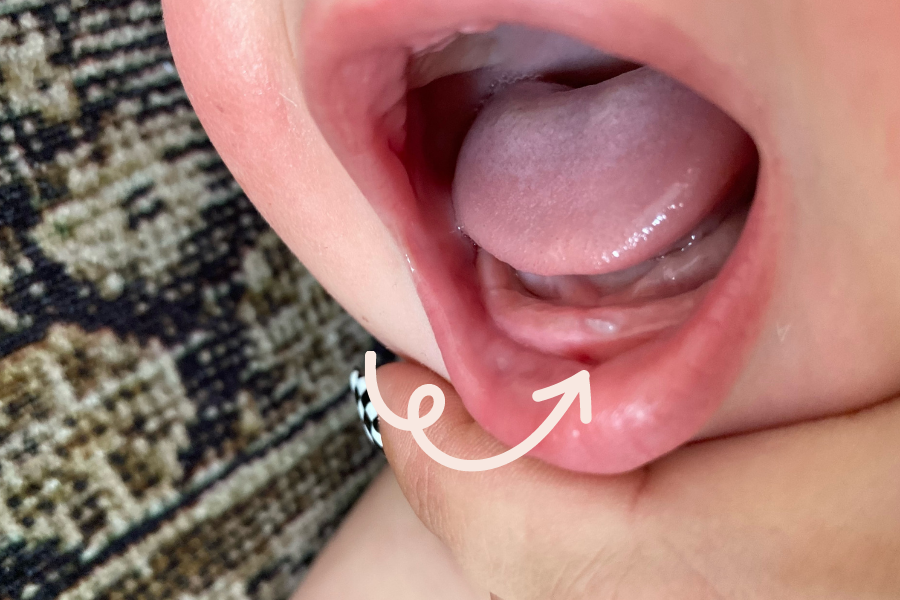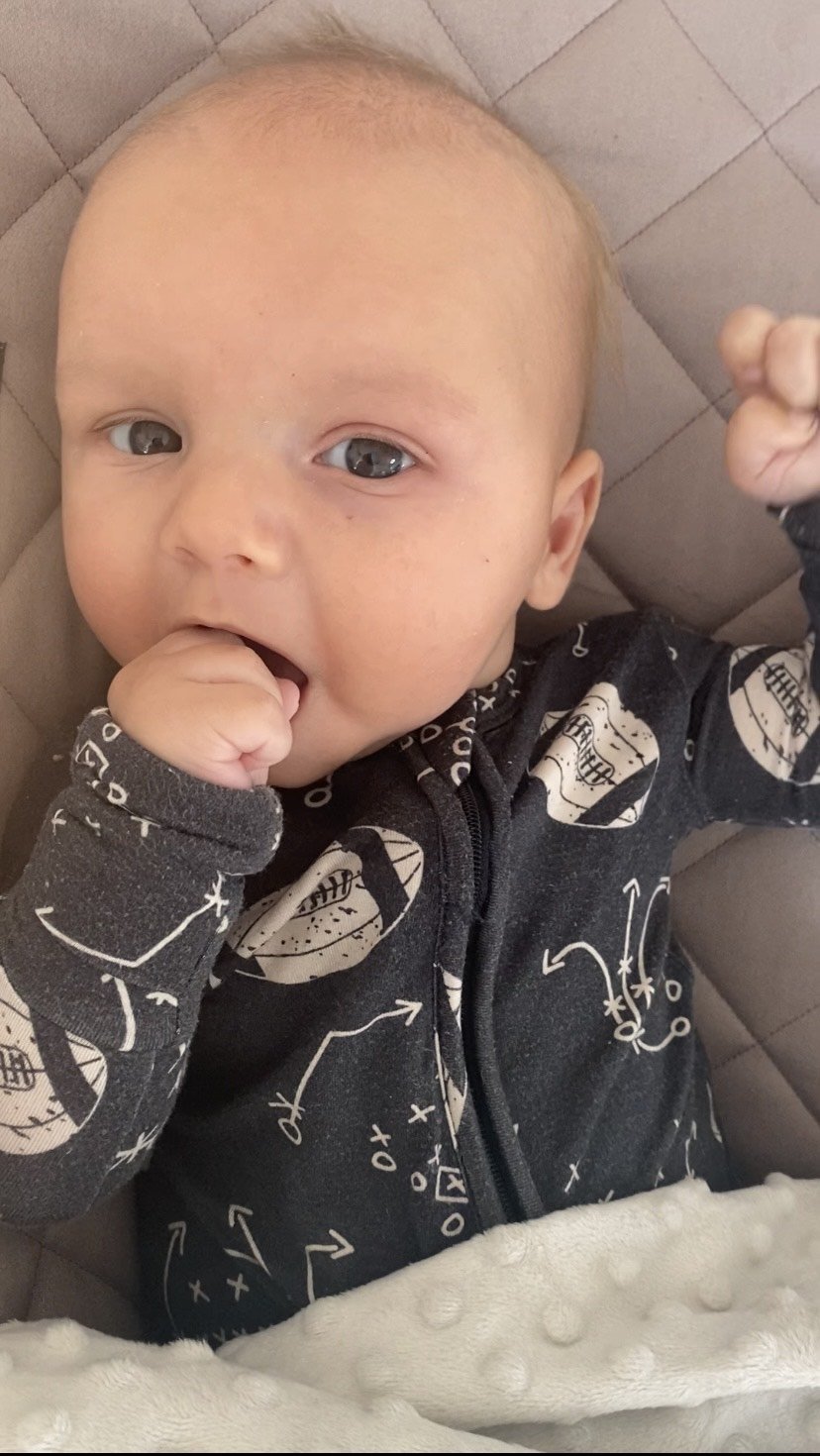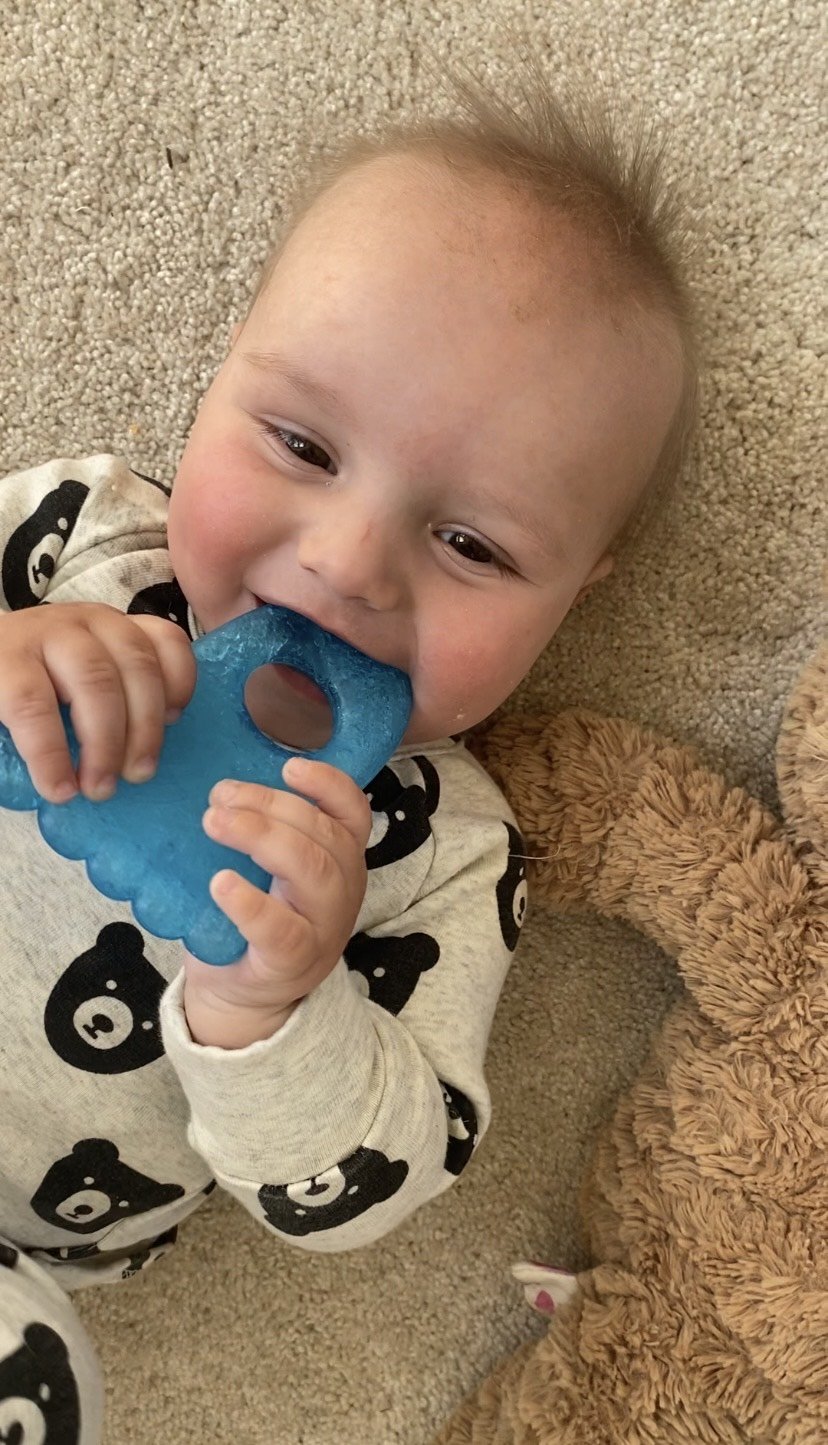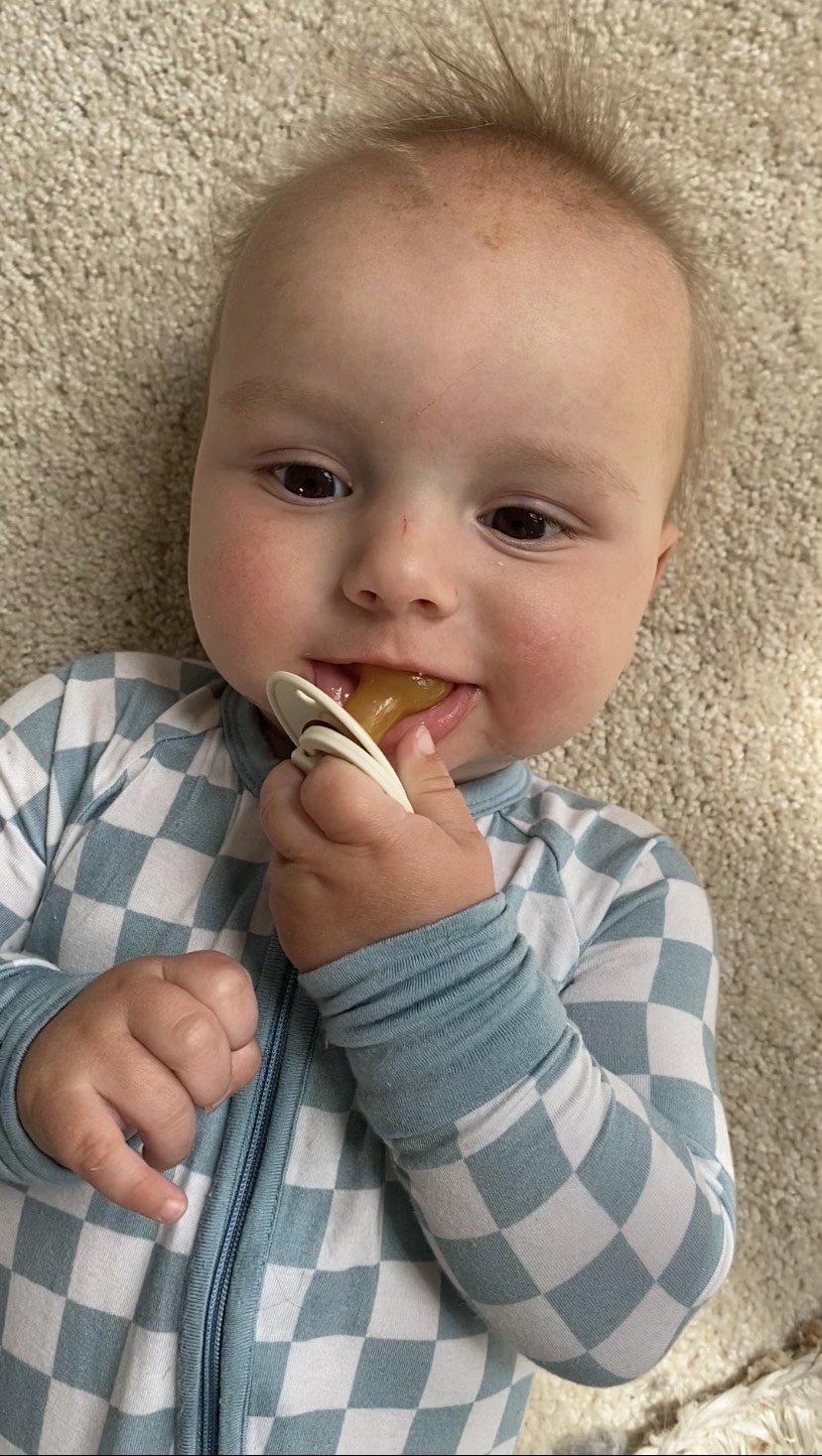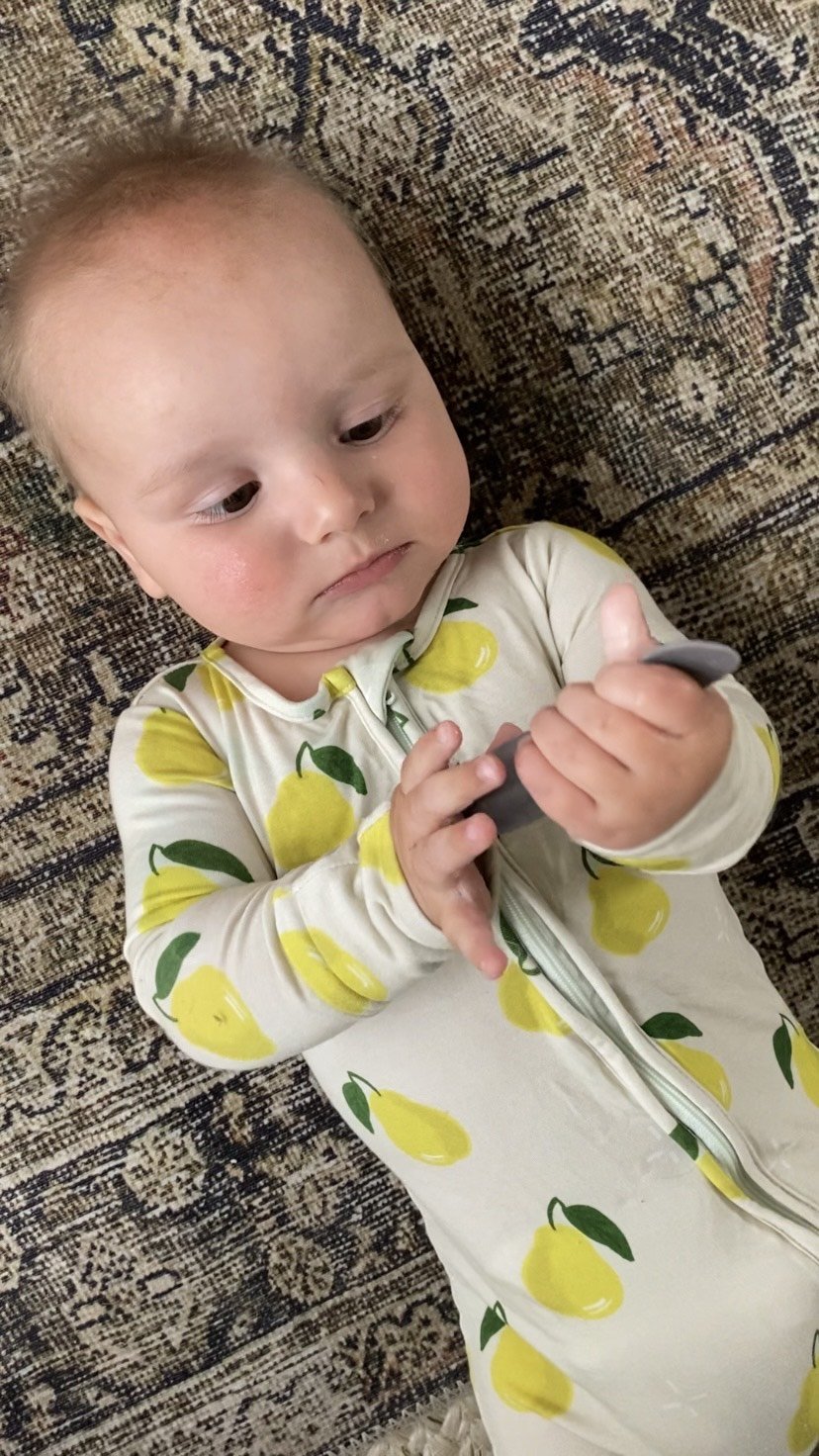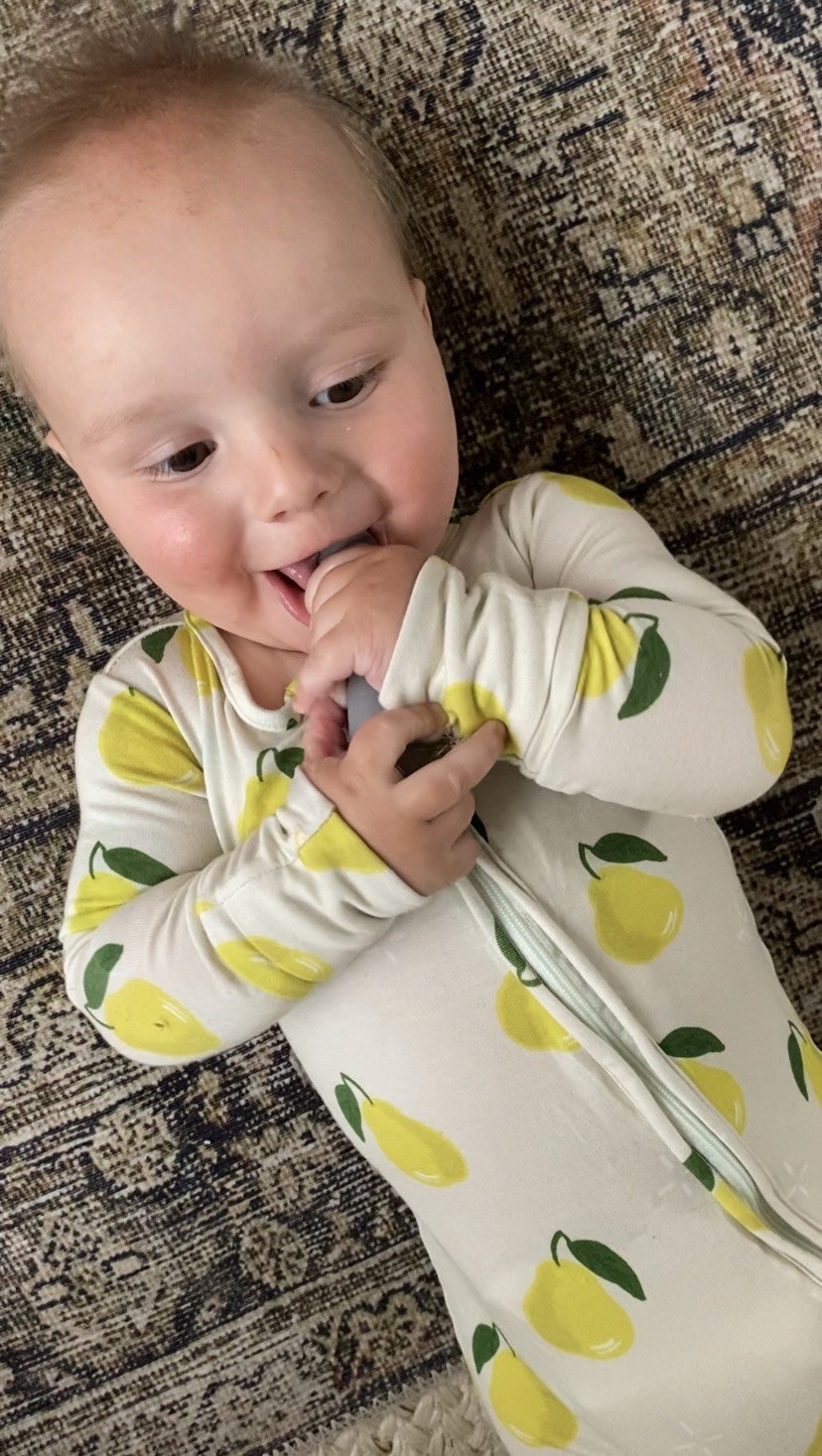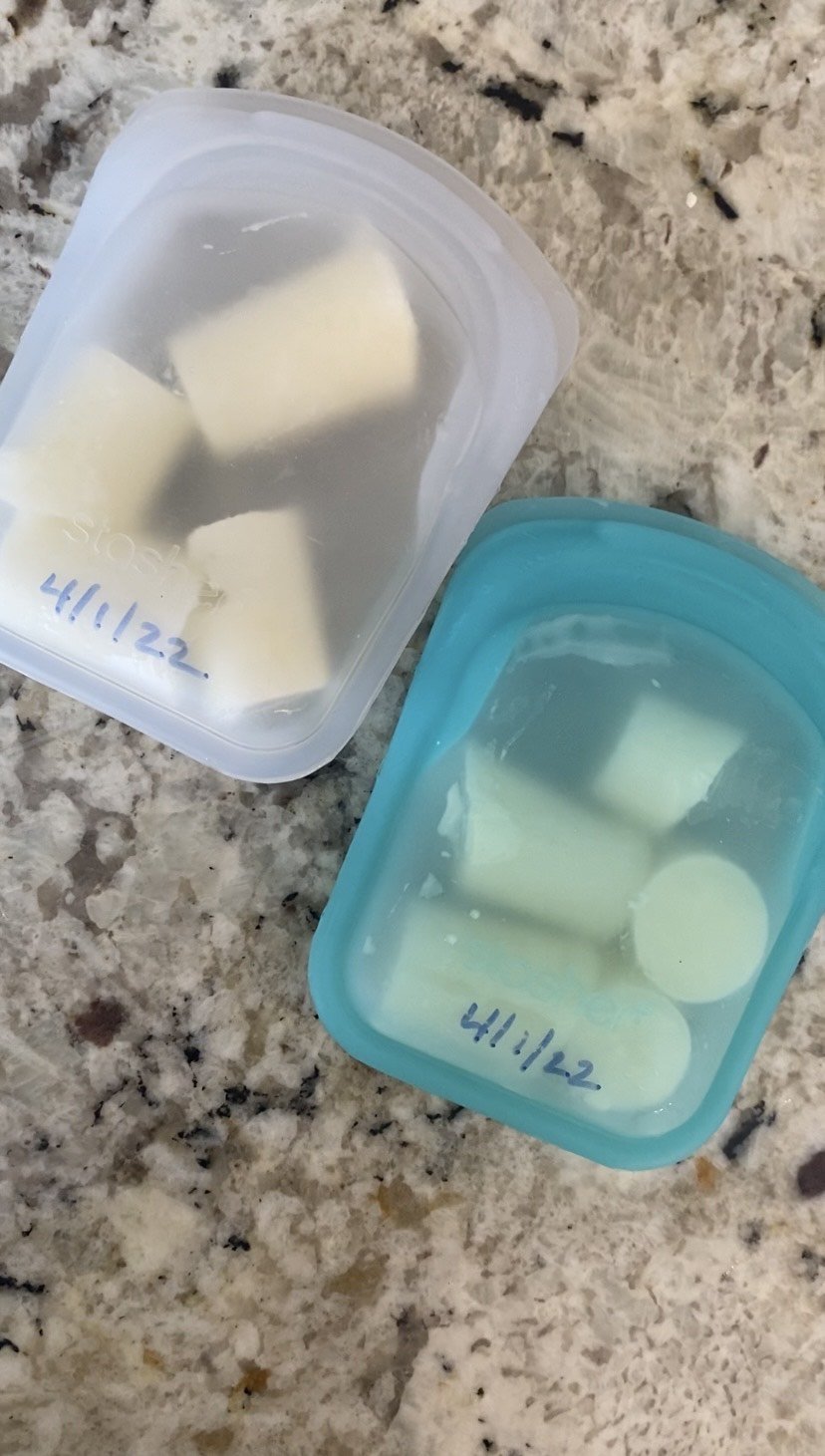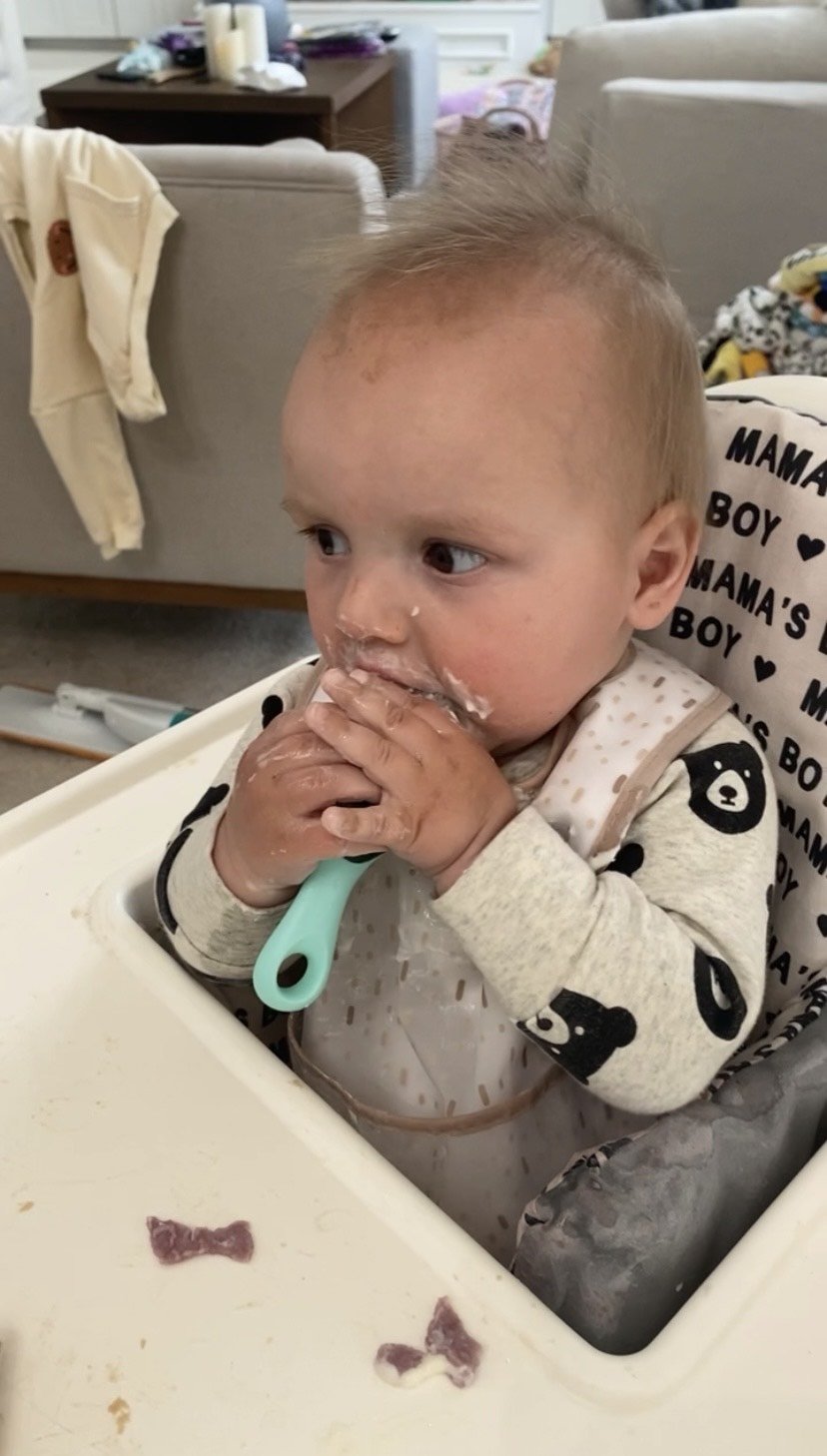Teething: What you need to know
Let’s talk about teething! This can be such a confusing topic for a lot of parents, myself included. With our first baby we don't really know what to expect. We heard that drooling and chewing on their hands could be a sign of teething. So it’s easy to think that they are teething from 3 months on, but not pop their first tooth until they are 9 months old. You just NEVER know! It’s okay, it IS confusing!! Let’s go through a couple signs you will probably see when your baby is actually teething.
HOW LONG DOES teething LAST?
Per the American Academy of Pediatrics teething “typically lasts from about 5 months to 30 months” give or take. That seems SO LONG. That just means that your baby is periodically going to be popping teeth through that time period. However, the pain and symptoms associated with teething typically only arise about 24-72 hours before a tooth erupts. So this does NOT mean that the symptoms will be constant between during this time period.
HOW DO I KNOW MY BABY IS actually GETTING THEIR FIRST TOOTH?
Look in their mouth! If you start noticing those symptoms of irritability, pain, fussiness, excessive drooling, constantly wanting to put their hands in their mouth, look inside of their mouth and see what you can find!
This is the only definitive way to know a baby is about to get a tooth. Typically, a baby that has a tooth about to push through has red, inflamed gums or little red raised bumps on their gum line; sometimes, even a little white tooth bud that you can see right there under the surface of the gums. This finding means your baby is very close to pushing a tooth through and they are legitimately “teething”.
The excessive drooling, constantly putting their hands in their mouth, irritability and fussiness are all symptoms of teething, but also are all normal on their own. The best way to know that those symptoms are associated with teething is actually looking in their mouth to see those red raised bumps on their gum line and/or the white tooth bud underneath the surface. If those are present, you can truly associate symptoms with teething.
If you aren’t seeing gum inflammation, raised red bumps, or a tooth bud, it’s important that we remember that some of these “symptoms” are also associated with development. Around 3 months is when babies’ salivary glands develop, so they tend to drool a little more, but it is also when they find their hands— so they are curious, exploring and often bringing their hands in their mouth. This is a developmental process for baby and does not instantly mean they’re “teething”! Hands to mouth in the early months can also be a hunger cue.
Above is my son around 2.5 months, doing lots of hand chewing. He didn’t pop a tooth until 7 months!
SYMPTOMS THAT DO not MEAN TEETHING
There are symptoms that often come up and get thrown into the “oh, they must just be teething” realm; when in reality, they have nothing to do with teething whatsoever and may need further follow up.
1. FEVER- This definitely gets associated with teething, but is actually not a part of teething. A slight increase in body temperature (low grade fever) *can* be associated with teething as part of the inflammatory response (99.0-99.5 degrees), but a true fever is not. A fever is defined as a body temperature of 100.4 degrees or greater. You NEED to call the pediatrician if a FEVER of 100.4 degrees or greater is occurring, as this could be an illness or an infection that needs to be ruled out. That is NOT teething.
2. DIARRHEA- Teething is often blamed for this as well. Though your baby’s stools may tend to be a bit looser when teething (due to excessive drooling and salivating), true diarrhea is not related to teething.If baby is experiencing diarrhea (explosive stools, blood in the stool, very watery stools, and more frequent stools than typical), that is NOT from teething. If this is occurring, check their temperature, offer smaller feedings by breast or bottle often (hydration is essential), and give your pediatrician a call.
3. REFUSING BREAST & BOTTLE- Your baby may tend to decrease their amount of solids that they want to eat if they’ve started solids. That's okay. It might just be too painful for them as a tooth is erupting. Baby also might not want to nurse or bottle feed as frequently, but the teething pain should not cause them to refuse breast or bottle consistently. If this happens, please call your pediatrician. Babies get most of their nutrients, hydration, and calories through breastmilk or formula until age 1. It’s important that they are getting enough to eat and drink, even while teething. A consistent breast or bottle refusal is typically not related to teething.
WHAT CAN WE DO TO help THEM
Let's say our baby is showing symptoms, and we have looked in our baby's mouth and we do see that red, raised bump & a little tooth bud underneath. Our baby IS teething! We can confidently say that these symptoms they’re experiencing are associated with teething. What can we do to help them? How can we provide comfort for our baby during this time?
1.TEETHING TOYS- Silicone teethers (like the ones I have linked in this storefront and below) are great for them! Lets them explore, soothe, and use their senses.
Itzy Ritzy Silicone Teether | Comotomo Silicone Baby Teether | Nubie keys.
PRO TIP- Chill them in the fridge for 20-30 minutes before giving to a baby for a soothing/numbing property!
PRO TIP- Providing these toys before a nursing session can help decrease the likelihood of biting amidst a nursing session. We will talk separately about biting soon!
The AAP + most pediatric dentists indicate that teething products are great in the fridge rather than the freezer. Who likes to bite onto something that is completely rock hard?! NOBODY! It can actually cause the gums to bruise and the extreme cold can lead to frostbite on the gums in some cases. Instead, try chilling them in the fridge for 20-30 minutes. Babies are more likely to rub them on the gumline and chew on them more willingly (without causing damage or further pain!).
I am going to be a real life mom with you for a second and let you know that you do NOT need all the expensive beautiful teething toys that are out there. If that is your thing, go for it. That is amazing. Love it. However, let’s brainstorm a few realistic, safe, and effective things that could also be a “teething toy” if your baby gets tired of their’s or you don’t want to purchase a ton of them.
A silicone spoon— teething toy.
A pacifier— teething toy.
A clean finger— (sorry mom!)— teething toy.
A tupperware lid— teething toy.
The list goes on! As long as there are no small pieces involved, it can be simple to find effective “teething toys” to keep baby at bay and comfortable.
2. WASHCLOTH TRICK
I have a lot of muslin washcloths from Tubby Todd (use this code for 15% off auto applied at checkout!) that I love (they don’t shed). Tie off one of the corners and dip it in breastmilk or water, put it in a ziplock back or tupperware container, then put it in the freezer for 20-30 minutes. Where again, it is not rock solid, but it is nice and chilled and the baby has a clean place to put their hands and chew on it. It makes the PERFECT teething toy!
3. COLD FOOD/BREASTMILK CUBES
If baby has started solids, you can give them cold fruits (like berries, yogurt) in a mesh teether like this one, or on their own. This can be soothing on their swollen gums. If baby hasn’t started solids yet (or even if they have!), breastmilk cubes in a mesh or silicone teether can be an amazing form of relief as well. We used the SouperCubes silicone MyMilk trays (KARRIE10) to freeze small cubes.
4. MEDICATION
Even with all of this, if your baby is still extremely irritable, what can you do? Giving medication is an option. Key word: OPTION. If you do not want to medicate--don’t. But if you are comfortable with it and your baby is under six months you can give Tylenol (Acetaminophen). If your baby is over six months you can also give Infant Motrin (Ibuprofen). Discussing with your doctor first is recommended! Call the pediatrician, tell them your baby is teething, and see what dose of what you can give. However, it is important to remember that your baby MUST be over six months to have ibuprofen/motrin. The acetaminophen/tylenol can be used under six months.
5. GUM MASSAGE
Doing some gum line massage with a clean finger in your baby’s mouth or putting some counter-pressure on that inflamed area can really ease some of the discomfort.
6. FREQUENT NURSING
Remember, some babies may pull back from nursing or bottle feeding while a tooth is coming through, but some may actually want to suck more frequently. Some studies have shown that the rhythmic motion of suckling can be soothing for babies. Feeding your baby is more than just nourishing, it’s also nurturing. Therefore, you may actually see an uptick in some babies’ nursing/feeding patterns when they’re getting teeth as well. It can be comforting, plus, they’re closer to you!
DISCLAIMER:
I know so many of you really really love these, so I am sorry to be the messenger here! This is not to upset anyone, but I feel like it is necessary to let everyone know that the AAP does NOT recommend the amber teething necklaces. They have been proven to cause strangulation and choking, etc. You can read more about this here.
The AAP and FDA also do not recommend the benzocaine-containing infant teething gels (like Orajel). It contains benzocaine— which can cause a rare but life-threatening situation called methemoglobinemia— which causes the blood to carry less oxygen. It is not recommended to use those gels on your baby, plus, they truly aren’t very effective. The numbing effects only last for a few minutes on the gums. You can read more about the FDA’s warning here.
This post contains affiliate links. I may earn a small commission with purchases through these links, with no extra cost to you. I truly appreciate it! Here is a link to my full Amazon Storefront with all of our favorite teething products!
Was this post helpful? Save it for later!



